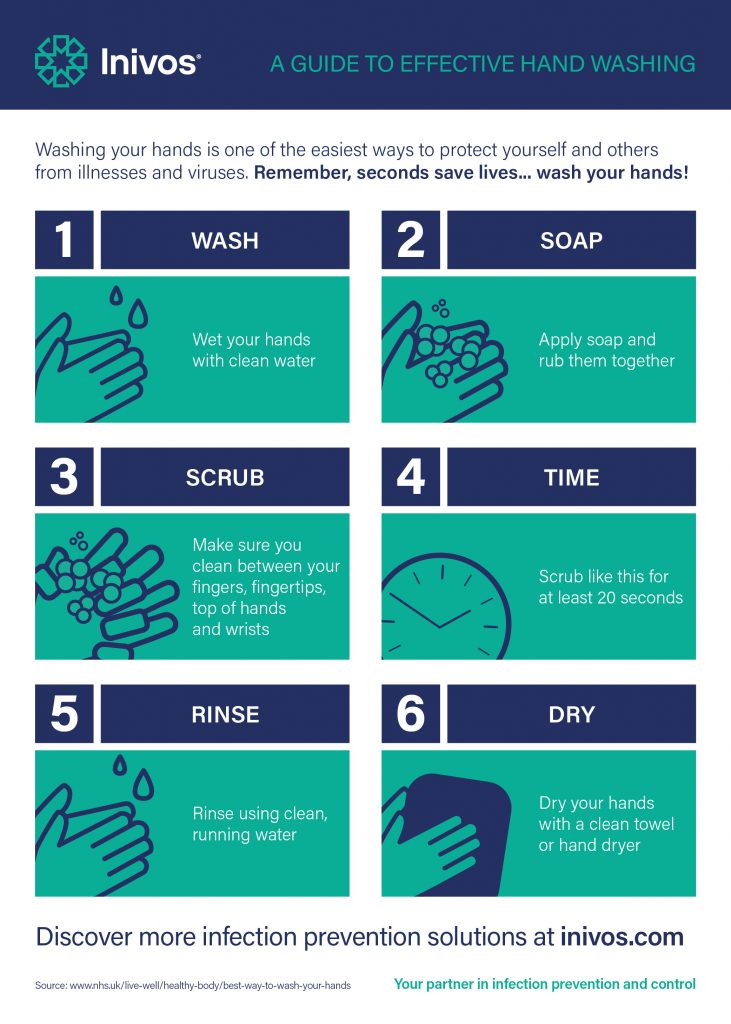
Today is the WHO designated World Hand Hygiene Day so we’ve created a reminder of how you should wash hands to ensure you’re doing as much as possible to minimise the risk of spreading infections, particularly if you’re actively involved in the care of others.
The general public has become more aware that the basic routine of washing your hands should have a structure. The WHO initiative works to embed the understanding of this structure within society as an everyday practice, particularly at the point of care.
A study by BMC Infectious Diseases found that nurses are much more likely to spread pathogens that are transmitted by hand. The necessity of their work means that they travel from patient to patient every day, often between wards. Research conducted at the University Medical Center Groningen (UMCG), Netherlands, highlighted that adherence to hand hygiene compliance deteriorated at busy times, leading to predictions that higher transmission rates of harmful pathogens occurred at weeknights and weekends, when contact time with patients was reduced, but there was an increase in the number of patients seen1.
The coronavirus pandemic has boosted hand hygiene concerns and awareness. Collectively, we’ve all become more aware of what might be on our hands as a result of sneezing, coughing, proximity to other people, and contact with surfaces. The fact is that the spread of diseases and infections by our hands is nothing new and will continue to be in the future. Be aware of the correct hand washing technique for effective hand hygiene and implement whenever possible.

Practicing good hand hygiene is just one of the important infection prevention and control activities, but there is no silver bullet!
Inivos operate round-the-clock decontamination services to reduce the risk of infection spread from surfaces in a core environment. Call us today for more information.




